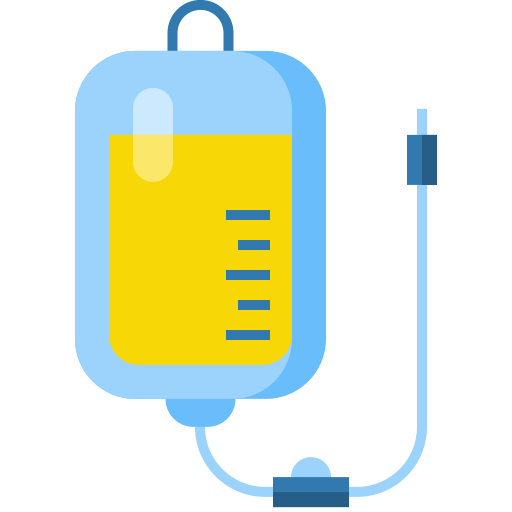
Paracetamol
10 mg/ml
Eskayef Pharmaceuticals Ltd.
Product Details
Description
Paracetamol exhibits analgesic action by peripheral blockage of pain impulse generation. It produces antipyresis by inhibiting the hypothalamic heat-regulating centre. Its weak anti-inflammatory activity is related to inhibition of prostaglandin synthesis in the CNS. Paracetamol (Acetaminophen) is thought to act primarily in the CNS, increasing the pain threshold by inhibiting both isoforms of cyclooxygenase, COX-1, COX-2, and COX-3 enzymes involved in prostaglandin (PG) synthesis. Unlike NSAIDs, acetaminophen does not inhibit cyclooxygenase in peripheral tissues and, thus, has no peripheral anti-inflammatory affects. While aspirin acts as an irreversible inhibitor of COX and directly blocks the enzyme's active site, studies have found that acetaminophen indirectly blocks COX, and that this blockade is ineffective in the presence of peroxides. This might explain why acetaminophen is effective in the central nervous system and in endothelial cells but not in platelets and immune cells which have high levels of peroxides. Studies also report data suggesting that acetaminophen selectively blocks a variant of the COX enzyme that is different from the known variants COX-1 and COX-2. This enzyme is now referred to as COX-3. Its exact mechanism of action is still poorly understood, but future research may provide further insight into how it works. The antipyretic properties of acetaminophen are likely due to direct effects on the heat-regulating centres of the hypothalamus resulting in peripheral vasodilation, sweating and hence heat dissipation.
Paracetamol is contraindicated in patients with known hypersensitivity to its active ingredient or to any of the excipients in the intravenous formulation. Also contraindicated in patients with severe hepatic impairment or severe active liver disease
As all paracetamol products, adverse drug reactions are rare (>1/10000, <1/1000) or very rare (<1/10000). Frequent adverse reactions at injection site have been reported during clinical trials (pain and burning sensation). Very rare cases of hypersensitivity reactions ranging from simple skin rash or urticaria to anaphylactic shock have been reported and require discontinuation of treatment. Cases of erythema, flushing, pruritus and tachycardia have been reported.
Pregnancy Category C. There are no studies of intravenous Paracetamol in pregnant women; however, epidemiological data on oral Paracetamol use in pregnant women show no increased risk of major congenital malformations. Animal reproduction studies have not been conducted with IV Paracetamol and it is not known whether Paracetamol IV can cause fetal harm when administered to a pregnant woman. Paracetamol IV should be given to a pregnant woman only if clearly needed. There are no adequate and well-controlled studies with Paracetamol IV during labor and delivery; therefore, it should be used in such settings only after a careful benefit-risk assessment. While studies with Paracetamol IV have not been conducted, Paracetamol is secreted in human milk in small quantities after oral administration.
Administration of Paracetamol in doses higher than recommended may result in hepatic injury, including the risk of severe hepatotoxicity and death. Do not exceed the maximum recommended daily dose of Paracetamol. Use caution when administering Paracetamol in patients with the following conditions: hepatic impairment or active hepatic disease, alcoholism, chronic malnutrition, severe hypovolemia (e.g., due to dehydration or blood loss), or severe renal impairment (creatinine clearance < 30 ml/min). There were infrequent reports of life-threatening anaphylaxis requiring emergent medical attention. Discontinue Paracetamol IV immediately if symptoms associated with allergy or hypersensitivity occurs. Do not use Paracetamol IV in patients with Paracetamol allergy.
Pediatric Use: The safety and effectiveness of Paracetamol IV for the treatment of acute pain and fever in pediatric patients ages 2 years and older is supported by evidence from adequate and well-controlled studies of Paracetamol IV in adults. Geriatric use: No overall differences in safety or effectiveness were observed between these subjects and younger subjects, and other reported clinical experience has not identified differences in responses between the elderly and younger patients. Patients with Hepatic Impairment: Paracetamol is contraindicated in patients with severe hepatic impairment or severe active liver disease and should be used with caution in patients with hepatic impairment or active liver disease. A reduced total daily dose of Paracetamol may be warranted. Patients with Renal Impairment: In cases of severe renal impairment (creatinine clearance < 30 ml/min), longer dosing intervals and a reduced total daily dose of Paracetamol may be warranted.
Store in a cool & dry place & away from children. For single use only. The product should be used within 6 hours after opening. Do not refrigerate or freeze.
-
Support 24/7
Call us anytime -
100% Safety
Only secure payments